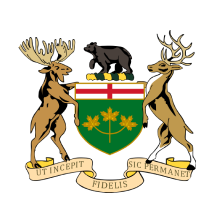Mark Carney has completed his first 100 days as Prime Minister of Canada, and recent polls indicate that many voters approve of his performance. An Abacus Data poll released this week shows that Carney and his government have positive approval ratings. Similarly, a Leger poll found that 56 percent of respondents support Carney and would favor his Liberal Party for a majority if elections were held now.
However, there is uncertainty about what specific actions Carney is being praised for. The same Abacus Data survey revealed that only 36 percent of Canadians believe the country is on the right track. Critics point out that Carney has made little progress on his key campaign promises, and several economic indicators have worsened during his tenure.
One significant issue is capital flight. Following Carney's previous role at Brookfield Asset Management, where he advocated for relocating the company's headquarters from Toronto to New York, many investors have followed suit. Statistics Canada reported that in the first four months of 2025, $84 billion left the country, averaging $30 million per hour.
In terms of taxation, while Carney has reduced some tax rates, including the consumer carbon tax and implemented a middle-class tax cut, the overall tax revenue as a percentage of GDP has reached a 20-year high. Economist Richard Dias noted that federal tax revenue now accounts for 15.2 percent of Canadian GDP, with provincial and local taxes adding another 16.4 percent. This indicates that the government is increasingly relying on a shrinking tax base to fund its operations.
Additionally, the gap in per capita GDP between the U.S. and Canada has widened significantly. Canadian per capita GDP has been declining since 2014, despite overall GDP growth. This stagnation means that the average Canadian worker is contributing less to the economy each year, which could lead to lower wages and reduced purchasing power. In contrast, U.S. per capita GDP has risen, creating an 18 percent productivity advantage for Americans since 2015, while Canadian productivity has only increased by 2 percent.
Finally, insolvencies in Canada are reaching levels not seen since the Great Recession, raising concerns about the economic stability under Carney's leadership. As the country navigates these challenges, the electorate's approval may be tested in the months ahead.

 Local News in Ontario
Local News in Ontario

 Canada News
Canada News Raw Story
Raw Story WFMJ-TV Politics
WFMJ-TV Politics America News
America News CNN Video
CNN Video